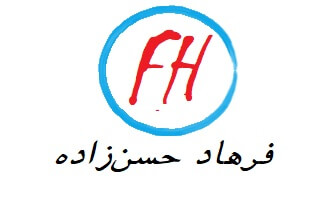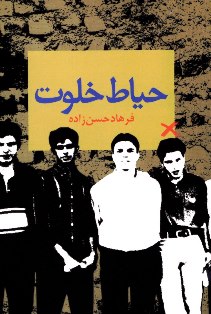The Backyard
• Author: Farhad HasanzadehISBN: 9789643114275
First print: 2003
Last print: 3rd, 2007
Main language: Persian
Page count: 351
Publisher: Qoqnoos Publishing House
“The Backyard”, is Hassan Zadeh’s effort in demonstrating the unstable and ambiguous situation in post Iran-Iraq war. The ruins of two major Iranian cities-Abadan and Khoram Shahr, fading of formerly respected values and principles and desperate survivors bind in together under the framework of this exceptional novel. It is the story of an old friendship between six friends and compatriots and their unattained teenage love stories; the story of a discontented generation whose lives were ravaged after the 79’s revolution and then by the unfortunate war, so as if it was not for Ashor’s sister Sharife’s feminine dexterity, the six friends would never reunite for the rest of their lives. The narrator tells the story of this twelve year separation and the present situation of each character. Meanwhile the teenage love story of Sharife and Homayun is beautifully recounted amidst Ashor’s memories of war. Their house, once a school, war frontline and a field hospital, becomes the center of the universe with a fascinating story of its own, pulling each one back to their original starting point, after they leave under different pretexts. The gravity of thi focal point, Sharife’s house, is one of the main appealing features of this novel.
Awards: backyard was nominated for the national prizes “book of the year” ,”Golshiri literary award”, “mehregane adab and “ghalame zarrin” and it was chosen as the book of the year by the “adabe paydari” annual festival.
“The Backyard”, is Hassan Zadeh’s effort in demonstrating the unstable and ambiguous situation in post Iran-Iraq war. The ruins of two major Iranian cities-Abadan and Khoram Shahr, fading of formerly respected values and principles and desperate survivors bind in together under the framework of this exceptional novel. It is the story of an old friendship between six friends and compatriots and their unattained teenage love stories; the story of a discontented generation whose lives were ravaged after the 79’s revolution and then by the unfortunate war, so as if it was not for Ashor’s sister Sharife’s feminine dexterity, the six friends would never reunite for the rest of their lives.
Sharife prints a teenage picture of her brother in the missing persons section in the very same newspaper, Homayoun one of the six friends works. On a mid-week day, the men alarmed start appearing one by one. A few days later all six reunite in the city they grew up and are guests to Sharife and Ashor at former high school, home to their lively teenage days and rebellions. With diverse beliefs and ideals during the revolution days, each used to belong to a different group or party. Such diversity had also resulted in one of the six’s execution and the splitting of their friendly circle.
The narrator tells the story of this twelve year separation and the present situation of each character. Meanwhile the teenage love story of Sharife and Homayun is beautifully recounted amidst Ashor’s memories of war. Their house, once a school, war frontline and a field hospital, becomes the center of the universe with a fascinating story of its own, pulling each one back to their original starting point, after they leave under different pretexts. The gravity of thi focal point, Sharife’s house, is one of the main appealing features of this novel.
With “The Backyard”, Farhad Hassan Zadeh, casts a new light on the ordeals of a generation who had participated in a revolution, then fought in a tragic war and is now seeking peace and harmony. Each of the six characters depicts one aspect of the Iranian population in a post war era. Ashor, considers himself entitled to special privileges due to his active participation in the war, one that the authorities deny. Jom’eh, has returned from Dubai to take back the school and enters a disagreement with Ashor. Morteza has already settled in a foreign country. Homayun is a melancholic poet writing for the papers. Yad’olla turned out a doctor while Fereydon is an engineer constructing bridges. Shahed the last member plays the part of Sharife’s other brother who is in fact her illegitimate son after a bitter incident.
In the first look, Ashor stands out as the main character but eventually it is Sharife who plays the major role in bringing the entire story together. She is deprived of life and love due to the war with the old school, also the burial ground of her parents, as her only belonging.
The complexity of human encounters is woven together with all the threads twisted and tangled into a complex clew. Yet, as the story progresses, we see the knots open one by one and the story ends with nothing but Sahrife’s grief over the austerities of war and the tragic course of their lives.
The attractive and well acclaimed novel has already finished its third edition in Iran and was awarded a special recognition prize at Mehregan literary festival as well as Resistance Literary prize and is a candidate for the prestigious Golshiri award being considered a prominent example of Iranian literary work in regards with the war. The Iranian state television is planning to adapt the novel for a film production.


